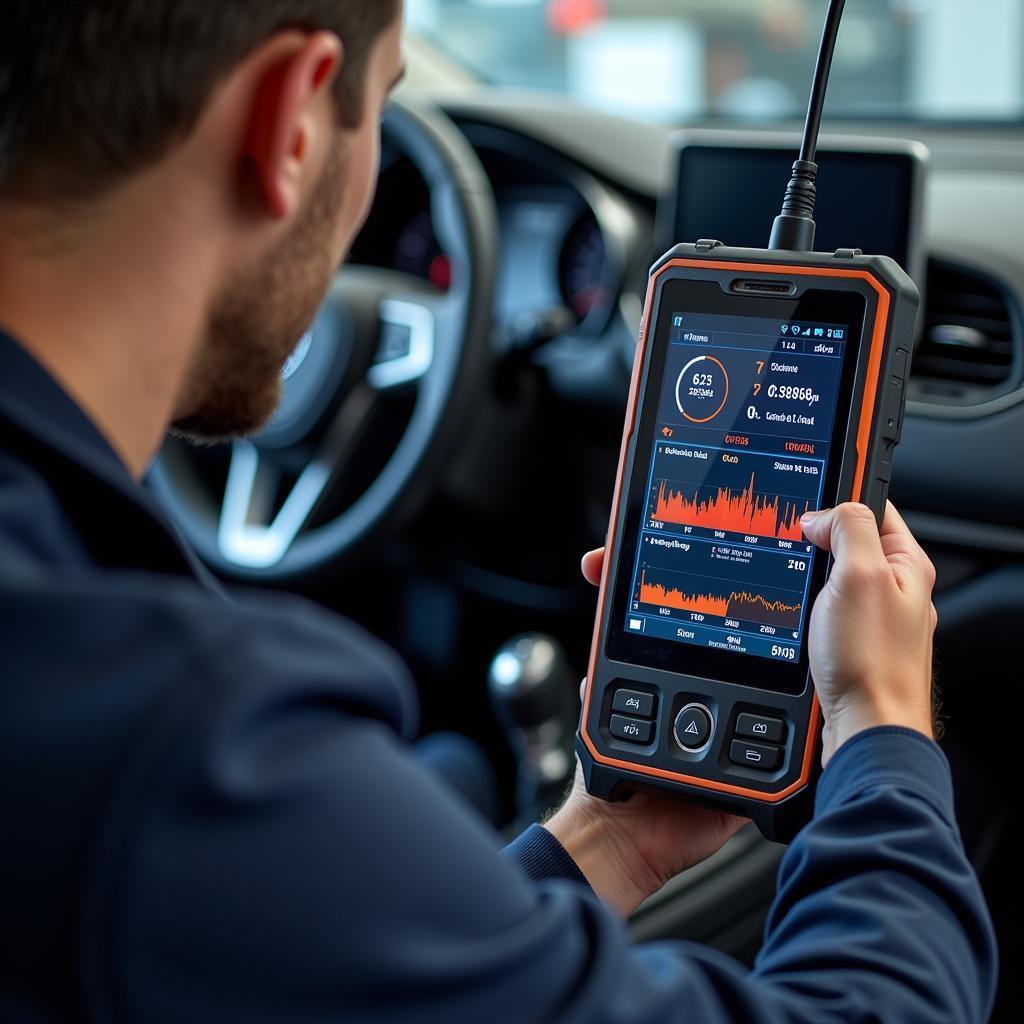Maintaining proper Car Maintenance Fluid Levels is crucial for the longevity and performance of your vehicle. From engine oil to coolant, understanding these fluids and their roles is essential for every car owner. This comprehensive guide will cover everything you need to know about checking and maintaining your car’s vital fluids, empowering you to keep your car running smoothly. basic car maintenance you can do yourself
Why are Car Maintenance Fluid Levels Important?
Ignoring your car maintenance fluid levels can lead to serious problems, ranging from decreased performance and fuel efficiency to catastrophic engine failure. Regularly checking these fluids is a simple yet effective preventative measure that can save you time, money, and headaches down the road.
Each fluid plays a specific role in keeping your car’s systems operating efficiently. Engine oil lubricates the moving parts, coolant regulates engine temperature, brake fluid transmits hydraulic pressure, transmission fluid facilitates gear changes, power steering fluid assists steering, and windshield washer fluid keeps your view clear.
Essential Car Maintenance Fluid Levels to Check
Knowing which fluids to check and how often is the first step in preventative car maintenance. Let’s break down each fluid and its importance:
- Engine Oil: The lifeblood of your engine, oil lubricates moving parts, reduces friction, and helps dissipate heat. Check your oil level at least once a month and before long trips.
- Coolant: Coolant prevents your engine from overheating. Check the coolant level in the overflow tank when the engine is cold.
- Brake Fluid: Brake fluid is crucial for your safety. A low level could indicate a leak and compromised braking ability. Check the brake fluid reservoir regularly.
- Transmission Fluid: Responsible for smooth gear changes, transmission fluid should be checked when the engine is warm and running.
- Power Steering Fluid: This fluid makes steering effortless. Check the power steering fluid reservoir when the engine is cold.
- Windshield Washer Fluid: While not crucial to your car’s operation, maintaining a sufficient washer fluid level ensures clear visibility in all weather conditions.
How to Check Car Maintenance Fluid Levels
Checking most fluid levels is a straightforward process. Always consult your owner’s manual for specific instructions for your vehicle model. Generally, you’ll locate the appropriate reservoir or dipstick, remove it, wipe it clean, reinsert it, and then remove it again to check the fluid level against the indicated markings.
For some fluids, like transmission fluid, the engine may need to be running and warm for an accurate reading. Always ensure the car is parked on a level surface when checking fluid levels.
[new driver car maintenance boot camp](https://autotippro.com/new-driver-car maintenance-boot-camp/)
What to Do if Fluid Levels are Low
If you find any fluid levels are low, adding the correct fluid is typically the first step. However, consistently low levels could indicate a leak that needs professional attention. Consult a qualified mechanic if you suspect a leak.
“Regularly checking and maintaining your car’s fluid levels is like giving your car a regular health check-up,” says renowned automotive expert, Dr. Emily Carter, Ph.D., Mechanical Engineering. “It’s a simple preventative measure that can prevent major problems down the line.”
When to Seek Professional Help
While checking fluid levels is a DIY task, certain situations warrant professional help. If you notice leaks, unusual fluid colors, or experience performance issues despite maintaining proper fluid levels, it’s best to consult a qualified mechanic.
“Don’t underestimate the importance of using the correct fluids specified in your owner’s manual,” adds Dr. Carter. “Using the wrong fluid can damage your car’s systems and lead to costly repairs.”
Maintaining Car Maintenance Fluid Levels: A Simple Guide to a Healthy Car
Maintaining proper car maintenance fluid levels is a cornerstone of responsible car ownership. By regularly checking and topping off your fluids, you can ensure the longevity and performance of your vehicle, prevent costly repairs, and enjoy a smoother, safer driving experience. Remember to always consult your owner’s manual for specific recommendations for your car model.
Don’t hesitate to contact AutoTipPro for further assistance. You can reach us at +1 (641) 206-8880 or visit our office at 500 N St Mary’s St, San Antonio, TX 78205, United States.
FAQ
- How often should I check my car maintenance fluid levels? It’s recommended to check most fluids at least once a month and before long trips.
- What if I add the wrong fluid to my car? Adding the wrong fluid can damage your car. If you’re unsure, consult your owner’s manual or a qualified mechanic.
- Where can I find the recommended fluids for my car? Your owner’s manual contains a detailed list of the recommended fluids for your specific car model.
- Is it expensive to maintain car fluid levels? Maintaining fluid levels is relatively inexpensive compared to the cost of repairs resulting from neglecting them.
- Can I check all fluid levels myself? Yes, most fluid levels can be easily checked at home. However, if you suspect a leak or notice anything unusual, consult a mechanic.
- What are the signs of a fluid leak? Signs of a leak include puddles under your car, low fluid levels, and unusual smells.
- Why is my car overheating even with enough coolant? Several issues besides low coolant can cause overheating, including a faulty thermostat, radiator problems, or a failing water pump. Consult a mechanic for diagnosis and repair.






Leave a Reply